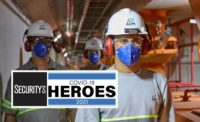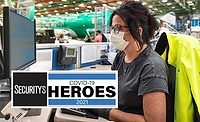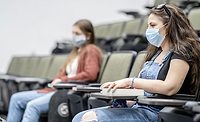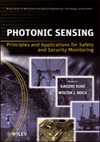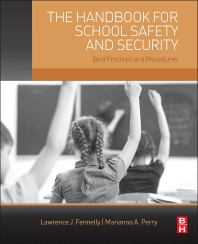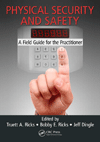COVID-19 Heroes
Yale University’s Public Safety Systems and Services team uses existing tech for robust COVID-19 response
By reimagining access control and use of existing system data, Yale’s Public Safety Systems and Services team was able to centralize and organize security technology operations, while providing further value across the entire university.
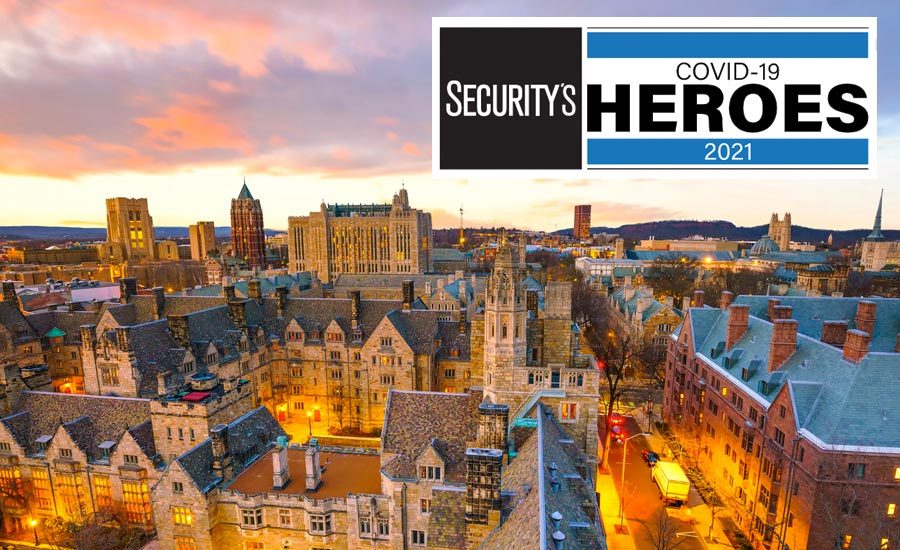
Historical building and Yale university campus in downtown New Haven, Connecticut.
f11photo / iStock / Getty Images Plus via Getty Images
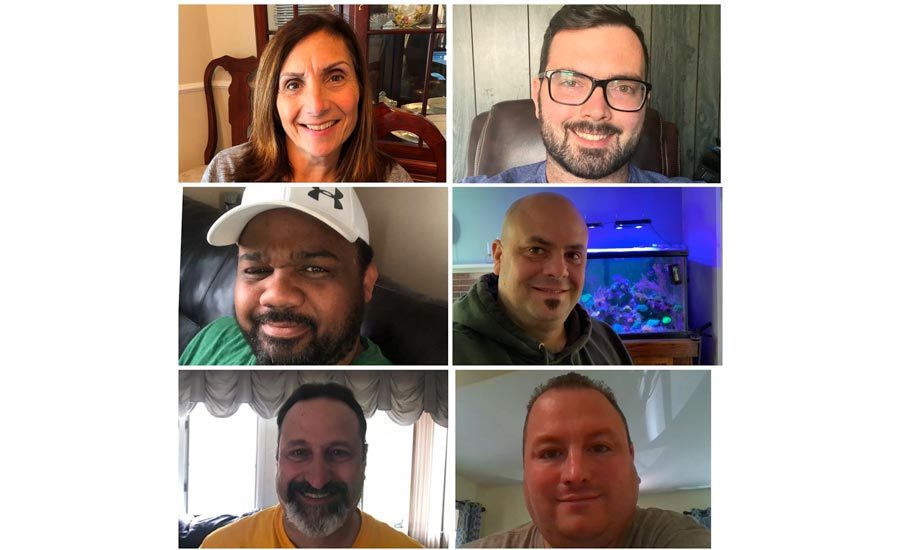
Yale University’s Public Safety Systems and Services team top row from left: Deborah Rodriguez, Neil Carney; middle row from left: Sheldon Gatison, Brian Pagan; bottom row from left: Frank Squeglia, Jason Tucker.
Image courtesy of Yale

William Goldbach, Associate Director, Yale University Public Safety Systems and Services.
Image courtesy of Yale
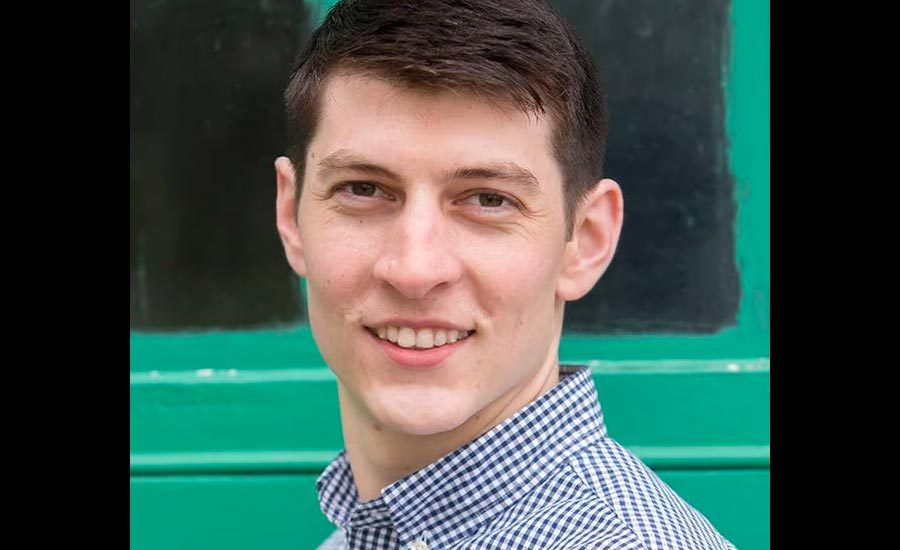
Stephen Donnelly, ID and Access Control Manager, Yale University Public Safety Systems and Services.
Image courtesy of Yale




Yale University (Yale) is a private Ivy League college in New Haven, Conn. Founded in 1701, it’s the third-oldest institution of higher education in the United States and one of nine Colonial Colleges chartered before the American Revolution.
With over 600 buildings, almost 12,000 undergraduate graduate and professional students, and more than 15,000 staff and faculty members, Yale has historically been an open campus in an urban environment mixed in with the city of New Haven.
Before the COVID-19 pandemic caused lockdowns across the U.S., the university’s Public Safety Systems and Services team, which is in charge of access control and credentialing for the campus, relied mostly on building “access authorizers” or building managers to dole out access and credentials for campus facilities.
Led by Associate Director William Goldbach, the Public Safety Systems and Services team consists of ID and Access Control Manager Stephen Donnelly and dedicated employees Deborah Rodriguez, Jason Tucker, Frank Squeglia, Brian Pagan, Neil Carney and Sheldon Gatison. But once Yale closed due to the pandemic in March 2020 — and has since had varied levels of students and staff on campus — the team quickly realized that they could change the way access control was used and programmed across campus, while also streamlining security and operations, and making use of existing data to be of big value to both Yale’s security teams and the greater university.
“The first shift the team had to make was reimagining how access control should be applied,” Goldbach says. On a campus where many buildings’ exterior doors were “green-lit” or fully open during business hours, the team had to shift to locking buildings and tightly controlling access. “This may sound different from a corporate security perspective, but this was a big change for the Yale campus environment,” he adds. And the shift was not only a big change, but also a big project, seeing as Yale’s main campus encompasses around 6,600 readers and between 40,000-48,000 identities at any given time within its access control systems.
ID and Access Control Manager Donnelly says that creating a more organized, centralized campus-wide access program required the Public Safety Systems and Services team to formalize university policies and procedures, as well as enhance role-based access and create new access groups and time codes where necessary.
“As the pandemic allowed us to start easing up restrictions, our policies around access remained, and our streamlined roles and groups are now the building block of every access code we create,” Donnelly says.
In the early days of the pandemic, the Public Safety Systems and Services group also scrambled to reprogram intrusion alarms across campus, Goldbach says. Traditionally, intrusion alarms had been turned on or off by the first person to arrive or the last person to leave a building on any given day, but as much of the campus staff worked remotely, alarms needed to be programmed to auto arm and disarm based on schedules. As an added benefit, the changes have significantly reduced user-error-caused false alarms for the Yale PD.
Goldbach and Donnelly say that the new access and alarm policies have made Yale’s campus a safer place and also have given the university the added benefit of situational awareness using centralized data.
With centralized access data, the Public Safety Systems and Services team has been able to supply reports and work closely with a myriad of other university departments to provide a single pane of view on access logs, occupancy data and more.
For instance, IT and Public Safety Systems and Services worked closely together, using data from both sides, to develop a program for COVID-compliance. The teams automated access for students and staff based on compliance of required testing, health checks and waivers. “If a person missed their routine test or was non-compliant in some way, we would automatically remove access to that person, while still allowing them access to their residence. It was a powerful tool in helping us enforce those community agreements and keeping the campus safe,” Donnelly explains.
The access team wasn’t only managing students and staff either. During the height of peak transmission in the spring of 2020, while the access team was busy reorganizing credential permissions for students and staff, Yale was asked by the state to provide housing for some 2,000 first responders, medical professionals, funeral workers and other frontline employees that didn’t want to risk transmission of the virus to their immediate household. “The University’s conference and events group managed the logistics, and we made specialized ID cards for these critical function workers to give them access to certain residential spaces,” Donnelly says.
Another important project that the Public Safety Systems and Services team took on without investing in any new technologies was using the campus LiveSafe app to communicate crucial COVID-19 information to students and the greater Yale community. Yale’s LiveSafe app is a communication resource, with maps of blue phone/emergency phones and direct access to safety escorts, Yale’s Police Department, and more.
“When COVID came, we began to think about how we could use this existing tool to better serve our community,” Goldbach says. In response, the team added COVID-19 information, including CDC recommendations and even the ability to request a COVID-19 test.
“As employees started to come back in to work, we added the ability to complete their health check through the app, and we also added COVID-19 testing sites to our existing blue phone and AED maps,” he continues. “It really helped us move things along quicker and give the community as much information as we could.”
While the Public Safety Systems and Services team was working hard to ensure efficient and streamlined COVID-response efforts, the team itself was transitioning to working remotely and keeping one ID and access control office open on campus for critical function workers — all without missing a beat.
“What the team did here in so many ways was reimagine and reinvent what we were doing previously,” Goldbach says. “It took everyone’s thoughts and experiences to figure out our plans and implement them. As a department, our motto is ‘strive for continuous improvement,’ and that’s really what they did here. After seeing everything they accomplished, it really strengthened our team’s buy-in for continuous improvement and made us stronger than ever before.”
Looking for a reprint of this article?
From high-res PDFs to custom plaques, order your copy today!





